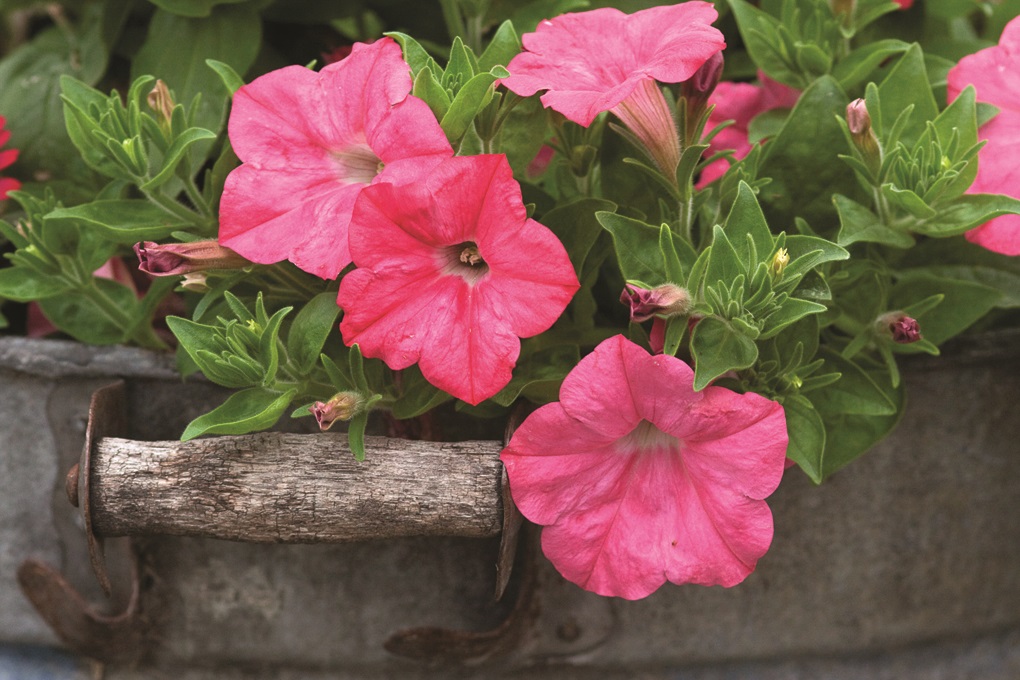
A SYMBOL OF HOPE
Growing plants are not only a symbol of spring, but an ongoing symbol of hope! What better task to fuel a belief in the future than growing plants in this unprecedented time of challenges of both the pandemic virus and of the economy. Many people are starting vegetables and other edibles to be self-sufficient and to share with others, but also to grow glorious bright colored flowers to bring pleasure and sunshine into everyone’s lives. Even inexpensive annual seeds of Cosmos, Marigolds, and Zinnias are easy to start and bring bushels of bright flowers for everyone’s pleasure.

Always check to see what light is needed for each type of plant. Then put pleasing combinations together with taller plants in the middle or back. One of my favorites is a big mass of pastel Cosmos with fragrant Cleome. Another is a bank of bright Petunias with a taller annual for contrast.
But first, let’s talk about soil preparation for these plants in order to get the best results. This is critical! Start spading or cultivating the soil as soon as you can, as long as you don’t have big clumps of mud. If it’s too wet, you can start putting down layers of manure and compost and spade it in as you have time and the soil is dry enough. For early vegetables such as Peas, Onions, Perennial Herbs and Edibles, you can cultivate during a break in the winter weather. But for sure by early March so the ground is ready and warm enough for your early Vegetables, Pansies and Primroses.
Some people ask what is the difference between commercial fertilizers and organics? There is a big difference because commercial fertilizers often leach down beyond the reach of young plants or seeds. Compost and manure break down into humus with the aid of microbes such as bacteria and fungi. There is a big difference too as bacteria and fungi are needed to break down the commercial fertilizer, hopefully before they are leached out of the plant root zone. The plants make glucose through photosynthesis and send part of it down to the roots to feed the microbes which in turn, digest organic material to carbon, nitrogen, phosphate, potassium, minor nutrients and trace elements to a chelated or carbon based form that the plants can use. The bacteria make the soil more acidic and the fungi make it more alkaline. The microbes store the nutrients in the humus and help release it as the plants need it. This creates a much faster and more luxuriant growth.
Many commercial soil mixes for professional growers and for hobbyists contain microbes such as bacteria and fungi (microrhysia). These are important not only for the above reasons, but because they prevent nutrient loss, increase disease suppression by biological controls, improve soil structure and help biological cleanup of chemical carryover. All of these are important for success. In addition, many people are becoming increasingly concerned about using organic controls of disease and insects which I will cover next week.
Karen Edwards
509-760-2222
509-765-6367
Edwards Nursery
11230 Nelson Rd NE, Moses Lake, WA
Garden Center • Flowers • Plants • Seeds

 Always check to see what light is needed for each type of plant. Then put pleasing combinations together with taller plants in the middle or back. One of my favorites is a big mass of pastel Cosmos with fragrant Cleome. Another is a bank of bright Petunias with a taller annual for contrast.
Always check to see what light is needed for each type of plant. Then put pleasing combinations together with taller plants in the middle or back. One of my favorites is a big mass of pastel Cosmos with fragrant Cleome. Another is a bank of bright Petunias with a taller annual for contrast.
